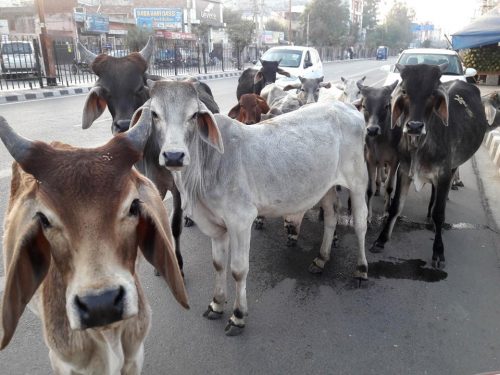What Is Lumpy Skin Disease Leading To The Death Of Cattle?

New Delhi: Lumpy skin disease (LSD), a viral infection that affects cattle and is highly contagious, has killed 57,000 cattle across the country, the Centre said on Thursday. Till now, the outbreak has affected over 15.21 lakh cattle. Cases have been reported from at least seven states including Gujarat, Rajasthan, Punjab, Uttar Pradesh, Haryana and Delhi.
The Centre has advised states to make efforts on the ground level to isolate animals and prevent the disease from spreading. The infection is spreading rapidly in Rajasthan and Gujarat where state governments have created control rooms in districts to monitor and indulge in effective prevention strategies. In August alone, over 3,000 cattle died in these two states due to the viral infection, News18 reported.
Rajasthan Chief Minister Ashok Gehlot wrote to the Centre, demanding that the lumpy skin disease be declared a national calamity. Gujarat has banned the transport of livestock in 14 affected districts.
According to the European Food Safety Authority(EFSA), Lumpy skin disease is a viral disease that affects cattle and is transmitted by blood-feeding insects, such as flies and mosquitoes, or ticks. LSD is caused by lumpy skin disease virus (LSDV), a virus from the family Poxviridae, genus Capripoxvirus, the World Organisation for Animal Health (WOAH) says. The disease can spread rapidly, and the principal means of transmission is believed to be by arthropod vectors, according to WOAH.
Direct contact with an infected animal is considered to play a minor role in the transmission of the virus. It is not known if the transmission can occur via fomites, for example, ingestion of feed and water contaminated with infected saliva, but these routes may be at play. In terms of animal-to-animal spread, once an animal has recovered from the infection, it is well protected and cannot be the source of infection for other animals. In infected animals that do not show clinical signs, the virus may remain in the blood for a few weeks and eventually disappear, the report said.
Lumpy skin disease can cause fever, nodules on the skin, discharge from the eyes and nose, reduced milk production and difficulty in eating. In some cases, the viral infection can be fatal, especially in animals who have previously not been exposed to the virus. Pregnant cows and buffaloes often suffer miscarriages due to the disease.
According to the WOAH, is not zoonotic, which means it does not spread from animals to humans, and humans cannot catch the viral infection.
Before the current wave, India had LSD cases in September 2020, when a strain of the virus was discovered in Maharashtra. Cases have also been reported in Gujarat over the last few years, but they haven’t spread at a pace seen currently.
According to WOAH, LSD is endemic in most African countries. Since 2012, it has been spreading rapidly through the Middle East, Southeast Europe and West and Central Asia. Since 2019, several outbreaks of LSD have been reported by several Asian countries. Pakistan’s Punjab and Sindh provinces saw over 29,000 cases of LSD, with 765 cattle deaths in Punjab alone, Dawn reported.

Comments are closed.